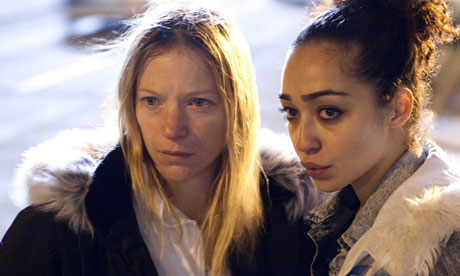 Crime and the law are not stable entities; rather they are constantly in flux, evolving with and around a society, for example in times of economic crisis, when employment goes down the prison population goes up. This is not necessarily because there are more criminals but rather because there is an ‘ideologically motivated response to a growing number of financially marginalised people.’(Hale et al. in McLaughlin and
Crime and the law are not stable entities; rather they are constantly in flux, evolving with and around a society, for example in times of economic crisis, when employment goes down the prison population goes up. This is not necessarily because there are more criminals but rather because there is an ‘ideologically motivated response to a growing number of financially marginalised people.’(Hale et al. in McLaughlin and In most societies however, crime is something which is outlawed by the state, these laws are made by the most powerful people in any given society and seldom properly protect the weak. Most notably, Prostitution laws are mostly made to stop prostitutes rather that those who solicit them or to address the factors which have caused these women to turn to prostitution. The critic Barbara Hudson points out ‘that crimes against the weak seldom get as far the criminal justice system, they are undiscovered, unreported, un-investigated, unresolved, unprosecuted and in the end forgotten.’ (Hudson 2009 lecture)
One area of feminine crime which has not changed that much with the passage of time is prostitution. It has strongly resisted any and all attempts at reform in the UK and Ireland on the basis that while society’s general make up may alter Christian values still hold sway and religion itself tends towards a patriarchal stand point. I have not the space here to do justice to the topic nor to give sufficient depth of analysis but it is true that in many patriarchal societies the only thing of value that a woman had to sell was her physical form. From Irish Brehon law, which saw prostitutes as less than people and void of an honour price, to the Victorian period were prostitution itself was illegal, but generally overlooked. It was only when these outcast and despised members of society were accused of being disorderly or ‘nuisance prostitutes’ that they felt the force of the legislation or criminal proceedings.
Little or none of the legislation which was introduced to govern prostitution was made to deal with those who utilised prostitutes, which were mostly men. Pat Carlen argues that this was largely due to the fact that male sexual acts had few visible results, the man bore no outward sign of the ‘disgrace’ associated with the using prostitutes while ‘[w]omen’s sexual misdemeanours’ often resulted in pregnancy (Carlen, 1983 P28)
In much the same way in which the Contagious Diseases Act 1864-1869 made women bear the blame for the spread of sexual disease but did nothing to deter the men that used prostitutes. Women could be harassed and imprisoned in hospitals on suspicion of having a sexually transmitted disease while the men who through the use of multiple prostitutes and sexual partners bore none of the responsibility. Indeed there were critics at the time who claimed that the Act did nothing but encourage the use of prostitutes as it ensured that the women who did sell their bodies were ‘safer’ as they were more likely to be free of infection. The nurse Florence Nightingale was one of many women who signed the ‘Women’s Protest’, which was eventually resulted in the repeal of the Act in 1886.
Bibliography Available




